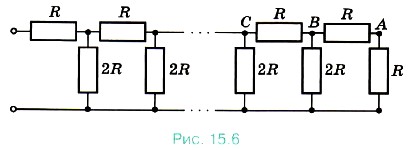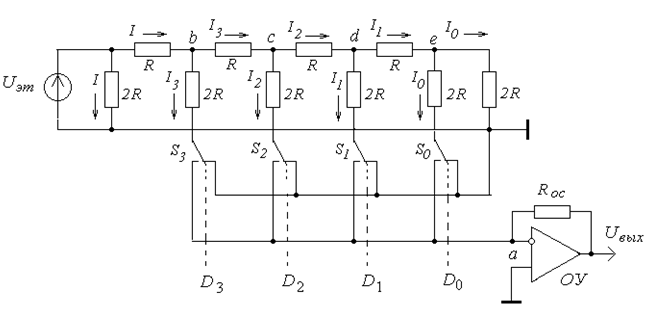Answer the question
In order to leave comments, you need to log in
What is the relationship between voltage and binary code?

Consider a chain of resistances R - 2R, called the matrix (Fig. 15.6).
On the last (right) link of the matrix, the voltage is divided in half due to the equality of resistances, on the previous link, the voltage is also divided in half, since it is distributed between the resistor R and two resistors 2R in parallel, etc. This idea - voltage division - lies in based on the conversion of binary code to constant voltage, which is necessary for the operation of computers.
Can you tell a little more about this? I've just never heard of such a connection between voltage and double when.
Answer the question
In order to leave comments, you need to log in
Well, here's a 4-bit version for compactness:

We apply a voltage, say, 1 volt, to the input of the matrix R-2R, and by controlling the binary code at the inputs D0 ... D3, we get the same voltage at the output, divided by 16 steps (of course, taking into account the scale set by the operational amplifier, i.e. in fact, the resistor Roc).
But in general, there is a lot of material on this topic on the Internet .
Can you tell a little more about this?
This idea - voltage division - underlies the conversion of binary code to constant voltage, which is necessary for computers to work.
Didn't find what you were looking for?
Ask your questionAsk a Question
731 491 924 answers to any question